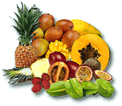
September 2004 The Daley NewsWhat's New in the NurseryWell I think I can say Winter is over and Spring is in the air, so I hope everyone is Once again we have had a change in staff so I must welcome back some old members of the team, Carla and Geoff who have been away from us for a little while discovering new places and new businesses. It is great to have them back as Story of the MonthNorthey Street City Farm - TEN Years Old !!!
NSCF aims to model a wide range of sustainable practices including a Green Waste Recycling Centre that processes 200 Tonnes of urban green waste into compost annually, a three year old cabinet Timber Plantation of native species, compost toilets, over 1000 fruit trees, organic gardens that feed lunch to 50 people a day, it holds Certified Organic Food Market attracting 800 people weekly, a community edible foods nursery that sources all its soil and planting materials from the farm, a market garden and regular training programs in a wide range of sustainable farming and lifestyle topics. Recent achievements have included developing a training manual for volunteers and volunteer co-ordinators on Community gardens (available on hard copy or CD), holding a professional workshop for government employees on Growing Communities through Community Gardens, establishing a cultural garden for people from non-english speaking backgrounds and assisting the development of NSCF receives requests for support and advice from all around Australia on a regular basis. The interest in developing community gardens in parklands, schools and community centres has increased dramatically in the past three years. This has been reflected in the development of a National Community Gardens and City farms Network in 2004 which aims to support the growing interest in community gardens. NSCF has also recently started a program called ‘Growing
.....Our Favourites for September.....Wampee (Clausena lansium)
Wampees should be treated very much like any of the other citrus trees in regard to cultivation. A sunny, well drained site with plenty of water and organic matter should see these trees thrive. The crop is borne solely on the tips of branches, so the less pruning the better. Very few problems have been observed with pest and diseases other than occasional infestations of aphids. Mature trees can produce up to 50kg of fruit each year. Like its close relative the citrus it is full of vitamin C, approximately 28mg per 100g. This fruit can be used for making jams, jellies, pies, drinks but I believe they are best eaten fresh, straight from the tree. If you want them to keep a bit longer you can try leaving the stalks on them. Harvest time for these fruits is around November – January. A grafted Wampee will produce fruit in around 3-4 years. Two different varieties are available, Guy Sahm, which has a brown skin and has a sweet tangy flavour with excellent fruit and Yeem Pay, which is a yellow- skinned variety, more elongated and very sweet. Berry – Thornless Youngberry
Our Bushfood of the monthMidyim Berry (Austromyrtus dulcis)
Our Ornamental of the MonthNative/Coastal Rosemary (Westringia fruiticosa)
|
Fruit Trees





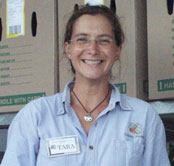 busy in the garden preparing for the warmer months ahead. Orchards should be looking great with new flushes of growth, buds, flowers and even fruits beginning to form. Now is the time to give most plants a good fertilise, water and mulch, preparing them for warmer, drier weather that could be ahead.
busy in the garden preparing for the warmer months ahead. Orchards should be looking great with new flushes of growth, buds, flowers and even fruits beginning to form. Now is the time to give most plants a good fertilise, water and mulch, preparing them for warmer, drier weather that could be ahead. 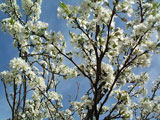 they have a wealth of knowledge that has been hard to replace. We have a couple of new trainees on the team, Ben and Cory, who have fitted in well with our establishment and are keen to learn and take on new challenges. One more addition to the nursery would be Chris who has quickly become a valuble member of our team here at Daleys.
they have a wealth of knowledge that has been hard to replace. We have a couple of new trainees on the team, Ben and Cory, who have fitted in well with our establishment and are keen to learn and take on new challenges. One more addition to the nursery would be Chris who has quickly become a valuble member of our team here at Daleys.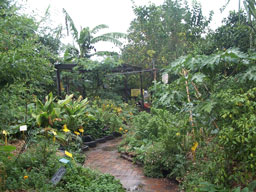 Northey Street City Farm, in
Northey Street City Farm, in 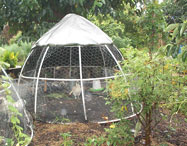 two school kitchen gardens in
two school kitchen gardens in 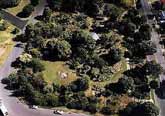 Communities’ which actively supports the establishment of community gardens through advice, training and on-ground support.
Communities’ which actively supports the establishment of community gardens through advice, training and on-ground support. This attractive, evergreen, slender tree has been described as the finest fruit of Siam (Thailand). It is also a highly valued backyard tree in southern China and south–east Asia, and one of my personal favourites. It is classed as a subtropical fruit but is relatively hardy and can withstand light frosts. This tree is a relative of the citrus family, thus its ability to grow in coastal Australia as far south as Melbourne and inland where the frosts are not too severe.
This attractive, evergreen, slender tree has been described as the finest fruit of Siam (Thailand). It is also a highly valued backyard tree in southern China and south–east Asia, and one of my personal favourites. It is classed as a subtropical fruit but is relatively hardy and can withstand light frosts. This tree is a relative of the citrus family, thus its ability to grow in coastal Australia as far south as Melbourne and inland where the frosts are not too severe. 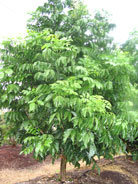 The fruits are highly aromatic and can be sweet to tangy to almost sour depending on the variety and ripeness. A very scrumptious fruit indeed, especially straight from the tree. I find these fruit very refreshing, thirst quenching and cleansing to the palette. They are very juicy with a translucent pulp similar to a grape. They form in clusters from a few up to eighty in one bunch. The fruits turn yellow when ripe and have a thin, sometimes brittle skin, somewhat like paper. They generally have only 1-2 seeds in each fruit and are best left to ripen on the tree for as long as possible. They are a very attractive looking tree that can grow up to 8 metres with, beautiful dark green ruffled compound leaves. They have a dense growth habit making them an ideal shade tree.
The fruits are highly aromatic and can be sweet to tangy to almost sour depending on the variety and ripeness. A very scrumptious fruit indeed, especially straight from the tree. I find these fruit very refreshing, thirst quenching and cleansing to the palette. They are very juicy with a translucent pulp similar to a grape. They form in clusters from a few up to eighty in one bunch. The fruits turn yellow when ripe and have a thin, sometimes brittle skin, somewhat like paper. They generally have only 1-2 seeds in each fruit and are best left to ripen on the tree for as long as possible. They are a very attractive looking tree that can grow up to 8 metres with, beautiful dark green ruffled compound leaves. They have a dense growth habit making them an ideal shade tree.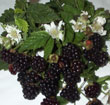 This is a very vigorous trailing bramble, with very sweet juicy fruit. When ripe the fruit is black-purple in colour and ripens just after Loganberries and before boysenberries. It is a hybrid between an American raspberry and a dewberry. It appears to crop heavier than the other two berries mentioned, and is a sweet, delicious tasting berry. They are full of vitamins and minerals and have plenty of fibre. There have been recent studies showing them to have high levels of potassium that apparently assists in controlling high blood pressure.
This is a very vigorous trailing bramble, with very sweet juicy fruit. When ripe the fruit is black-purple in colour and ripens just after Loganberries and before boysenberries. It is a hybrid between an American raspberry and a dewberry. It appears to crop heavier than the other two berries mentioned, and is a sweet, delicious tasting berry. They are full of vitamins and minerals and have plenty of fibre. There have been recent studies showing them to have high levels of potassium that apparently assists in controlling high blood pressure.  This would have to be one of the most delicious of all the Australian bushfoods. They can vary in flavour from extremely sweet to a rather aromatic almost methol flavour. Midyim berries naturally occur on the coast, from Northern NSW, up to Fraser Island, in Queensland, and were a favourite food among the local Aboriginals. They do best in a shady, sheltered place, with well -drained soil but are very adaptable to most sites if water is available. They make a great ground cover, tube specimen or garden plant. Midyim berries are very attractive, growing to a maximum height of 1m and width of about 80cm. They have narrow pointed leaves, 1-3 cm long, which are silky and red/pink when young, giving them a lovely flush of colour. They have a delicate mass of white fluffy flowers, which occur in spring and summer. Although only a small, bush they can produce a large number of small, round, white speckled berries twice a year (January and April). They can be slow growing to start but with ample water they should fruit well by there third year. The fruit is best, eaten fresh, seeds and all, but can be added to fruit salads, into a pie or made into a fabulous native jam.
This would have to be one of the most delicious of all the Australian bushfoods. They can vary in flavour from extremely sweet to a rather aromatic almost methol flavour. Midyim berries naturally occur on the coast, from Northern NSW, up to Fraser Island, in Queensland, and were a favourite food among the local Aboriginals. They do best in a shady, sheltered place, with well -drained soil but are very adaptable to most sites if water is available. They make a great ground cover, tube specimen or garden plant. Midyim berries are very attractive, growing to a maximum height of 1m and width of about 80cm. They have narrow pointed leaves, 1-3 cm long, which are silky and red/pink when young, giving them a lovely flush of colour. They have a delicate mass of white fluffy flowers, which occur in spring and summer. Although only a small, bush they can produce a large number of small, round, white speckled berries twice a year (January and April). They can be slow growing to start but with ample water they should fruit well by there third year. The fruit is best, eaten fresh, seeds and all, but can be added to fruit salads, into a pie or made into a fabulous native jam. 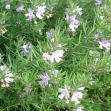 Unlike its common name, this native plant is not a bushfood but it is a very useful garden plant indeed. It is a very hardy plant, so in times of drought and frosts, this is the plant. It adapts to most soil types and is resistant to salt spray. It is only a small shrub, with a maximum height of 1.5m and a width of about the same. It naturally occurs in coastal regions of NSW and is found growing in our fore dunes. This plant has a beautiful white flower in winter and throughout the year, so adds colour to the garden in times of need and has grey/green foliage all year round. The Rayed Blue butterflies are attracted to these beautiful plants that can be used as a hedging plant, topiary, tube specimen or easy care garden plant.
Unlike its common name, this native plant is not a bushfood but it is a very useful garden plant indeed. It is a very hardy plant, so in times of drought and frosts, this is the plant. It adapts to most soil types and is resistant to salt spray. It is only a small shrub, with a maximum height of 1.5m and a width of about the same. It naturally occurs in coastal regions of NSW and is found growing in our fore dunes. This plant has a beautiful white flower in winter and throughout the year, so adds colour to the garden in times of need and has grey/green foliage all year round. The Rayed Blue butterflies are attracted to these beautiful plants that can be used as a hedging plant, topiary, tube specimen or easy care garden plant. 